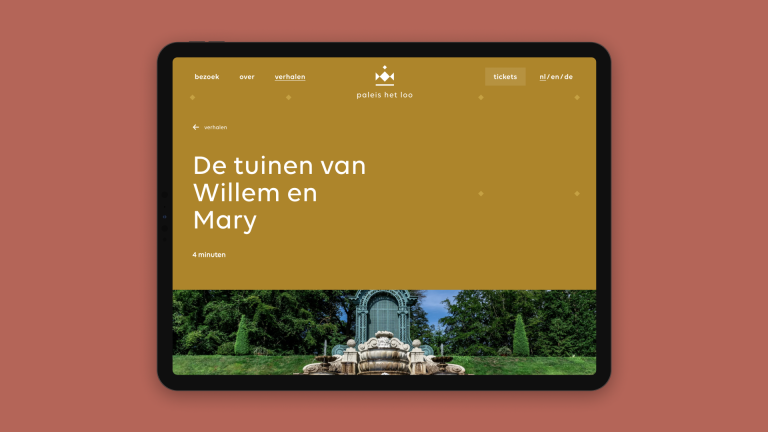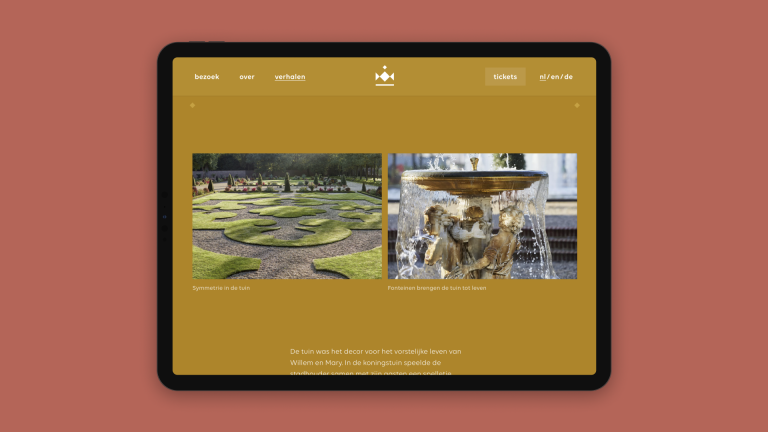The People's Palace
Paleis Het Loo
Paleis Het Loo was once the largest seventeenth-century palace in the Netherlands; members of the Dutch royal family occupied the estate until 1977. Since 1984, however, it’s become a palace for the people – reinventing itself as one of the country’s most popular museums. After years of closure due to renovations, Paleis Het Loo reinvented itself once again, reopening with an entire underground floor dedicated to exhibitions. This seemed like a good moment to also reinvent the palace’s communications, presenting a brand-new identity, website and wayfinding app.

Closer to the public
Paleis Het Loo wanted to bring the royal family closer to the public, narrowing the gap between the crown and the people. How? By giving every visitor a taste of royal opulence, but also celebrating tradition, culture and daily life on the estate. To realize these goals, we created a section called “Stories” for both the website and app. These stories explore the palace, its collection of art and antiques, as well as insights into the renovation and the royal family itself. For added accessibility, the stories were grouped by theme. While the old palace was dedicated to a single family, the newly renovated one welcomes all families, including a wide range of activities for kids. These family activities are highlighted next to the Stories section.
Grid inspired by palace decorations
The site is based on a diamond grid, inspired by both palace decorations and the new museum logo. The grid is itself a navigational aid, its visibility expanding or contracting depending on where the user finds herself.










An app that allows visitors to pursue their curiosity
The wayfinding app guides users through the palace and its environs with the help of two tools: the map and audio tours. The map highlights points of interest, each featuring a short text bringing history to life. The audio tours are similarly designed to serve users. Instead of visitors following the tour, the tour follows visitors – allowing them to pursue their curiosity while absorbing the palace’s many stories.

